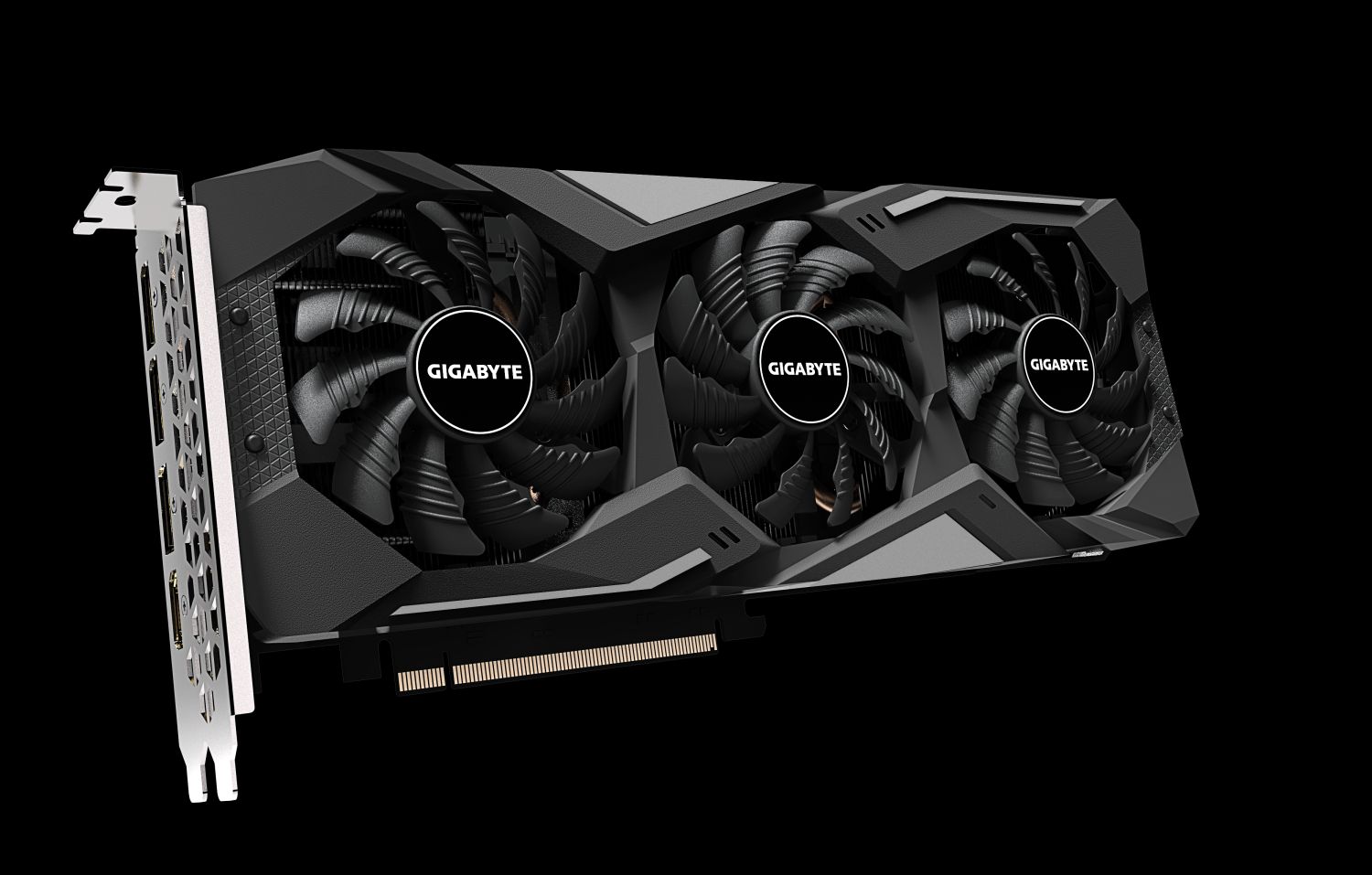Why you can trust Tom's Hardware
If one thing is clear from this review, it’s that 4GB of VRAM can be a big detriment to performance at 1080p. The fps difference between 4GB and 8GB models of the RX 5500 XT in Forza, Battlefield V, and Far Cry 5 are huge, with Shadow of the Tomb Raider also seeing a larger-than-we’d-expect performance difference. If you would like to maintain the same performance level across all games and have some headroom for new upcoming AAA releases, 8GB is the only option. If lowering image quality settings and playing at medium is acceptable on these titles, both cards are plenty capable of smooth 1080p performance.
The Gigabyte RX 5500 XT Gaming OC 8G takes the reference specs and improves upon them with slightly higher clock speeds and a capable Windforce 3 cooler. The cooling solution offers modern features such as 3D-fan capability where the fans are off when idle and low loads, only spinning up when needed. When they ramp up, although the speeds are higher, the cooling solution was still quiet in our testing. Between the 5500 two cards, thermally, the Gigabyte card does a better job overall. The card’s appearance is designed not to offend and will blend in with most build themes. That said, if you want lots of RGB lighting on your card, you should look elsewhere.

Gigabyte’ Gaming OC 8G has an MSRP of $219.99, or $20 more than AMD’s SRP of $199. For the extra money, you get a full-size cooling solution, slightly increased clock speeds, and the “Ultra-Durable” components. While that’s not a bad deal for what you get over a baseline 8GB RX 5500 XT, the Nvidia GTX 1660 will delivers performance that’s a few percent better overall at a similar price point--or a little less, with 1660s starting at $199 as of this writing. Also, previous-generation Polaris-based RX 590s perform slightly better than the RX 5500 XT and can be found well under $200. Just know that the RX 590 uses much more power (and therefore produces more heat and fan noise).
In the end, Gigabyte’s RX 5500 XT Gaming OC 8G played well at 1080p with our Ultra settings. Performance matched AMD’s expectations, with it falling between the GTX 1650 Super and GTX 1660. The Windforce 3 cooling proved more than adequate with the card able to run cool and quiet during our testing. But at current prices, unless you’re specifically after an AMD card for no-compromises 1080p gaming, most users are better off opting for an Nvidia 1660 that will deliver slightly better performance while using slightly less power under load, at a starting price $200) that’s also a little less than this $220 Gigabyte card.
MORE: Best Graphics Cards
MORE: Desktop GPU Performance Hierarchy Table
MORE: All Graphics Content
Get Tom's Hardware's best news and in-depth reviews, straight to your inbox.

Joe Shields is a staff writer at Tom’s Hardware. He reviews motherboards and PC components.
-
larkspur ReplyThe Windforce 3 cooler has little issue keeping up with the stock power limit of this card.
Yes, obviously. That's why I'm wondering why you didn't crank up the power limit and try some overclocking. This card is begging for it. -
hannibal This card is allready near the upper limit it can get, so it is better to keep it cool and quiet than try to get some extra speed.Reply -
larkspur Reply
No not really... This particular card has an excellent huge cooler and plenty of extra thermal headroom. Look at the temp chart and power usage. The thing isn't even close to maxed-out. Overclocking is exactly why someone would spend extra on this particular card to get this little chip with such a massive oversized cooler... No reason not to at least give it a shot using AMD's own OCing tool...hannibal said:This card is allready near the upper limit it can get, so it is better to keep it cool and quiet than try to get some extra speed.
Furthermore, Igor believes that every Radeon RX 5500 XT should have no problem reaching the 2 GHz mark.
That's from: https://www.tomshardware.com/news/overclock-your-radeon-rx-5500-xt-to-21-ghz-on-air-with-this-tool -
alextheblue Reply
Yeah if you're not planning on overclocking, get a cheaper one.larkspur said:Overclocking is exactly why someone would spend extra on this particular card to get this little chip with such a massive oversized cooler... -
hannibal As we can see from 5700xt. Those huge saphire nitro, asus strix and so on cards Are not faster than much cheaper variants. They just run cooler and quieter that those expensive monster cooled versions.Reply
Same here... -
askeptic Am I the only one who read the entire article and walked away believing that Intel has the edge still?Reply
I don't agree that the AMD would need a custom water loop, but if it did that would throw the price to an absurd amount for that chip.
Intel still wins in the areas where it matters. The only time I would consider the AMD chip would be if my job was to constantly encode videos or unzip files. IE, if I were a creator. Most people are not creators. They may think they are, but they are not.
Software still favors Intel's platform as well. Maybe in 3 more years AMD would be a viable option for most at the high end, but I am just not seeing it. The size of process nodes play no role in my decision as I would never have a reason to care, I just want what is fastest for most applications, and this article leads me to believe that is Intel hands down.
For those videos I use Sony Vegas for twice a year, I guess I will have to wait 120 more seconds than normal.